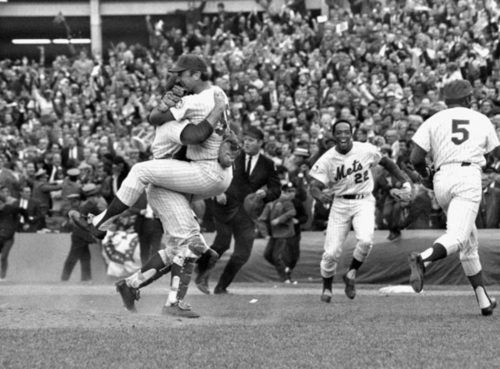
The 1969 regular season saw the New York Mets win 100 games — their first winning season since their 1962 inception — and clinch their initial National League East title, courtesy of an Amazin’ stretch over the final two months of the season.
That miraculous turn of events, combined with a historic collapse on the part of the Chicago Cubs, who watched a 10-game lead over the Mets on August 13 evaporate and transform into an eight-game deficit at the end of the season, put the Mets in line to face the heavily-favored National League West champion Atlanta Braves in the NLCS.
Led by a 35-year-old Hank Aaron (.300/.396/.607, 44 homers, 97 RBIs), first baseman Orlando Cepeda (.257/.325/.428, 22 homers, 88 RBIs), Felix Millan, Clete Boyer, Felipe Alou, Rico Carty, and reserve outfielder extraordinaire, Tony Gonzalez (.294/.354/.447 over 357 plate appearances), the Braves offense’s 4.27 runs per game ranked fifth in the NL.
Righties Phil Niekro (23-13, 2.56 ERA) and Ron Reed (18-10, 3.47 ERA) led Atlanta’s starting staff, and right-hander Cecil Upshaw, then 26, headed up the team’s relief corps (2.91 ERA, 27 saves over 62 appearances; 105.1 innings).
With the first two games of the five-game series scheduled in Atlanta, the Mets undoubtedly had their work cut out for themselves. But, considering the hot streak this team went on to finish out the season (45-18 from August 1 through the end of the year), the Braves had to know they were running into a buzzsaw.
The Mets’ pitching staff, led by Tom Seaver (25-7, 2.21 ERA, 208 strikeouts, 82 walks over 36 starts; 273.1 IP), left-hander Jerry Koosman (17-9, 2.28 ERA, 180 K, 68 BB, 32 starts; 241 IP), Gary Gentry (3.43 ERA, 154 K, 81 BB, 35 starts; 233.3 IP), Don Cardwell (3.01 ERA over 30 starts), and Jim McAndrew (3.47 ERA over 27 starts), remains the key ingredient to the ’69 Mets’ historic success.
Tug McGraw‘s (2.24 ERA, 42 appearances; 100.1 IP) and Ron Taylor‘s (2.72 ERA, 59 games; 76 innings) outstanding relief work, as well as a solid season from their young righty, Nolan Ryan (3.53 ERA over 25 games, 10 starts; 89.1 IP), gave the Mets that added wrinkle that always seems to accompany championship teams — a dependable bullpen.
Tommie Agee (.271/.342/.464, 26 homers, 76 RBIs), Cleon Jones (.340/.422/.482, 12 HR, 75 RBIs), Ken Boswell (.279/.347/.382), and backstop Jerry Grote (.252/.313/.351) led the way for the Mets offense (3.90 runs per game; ninth in NL), but role guys like platoon outfielder, Art Shamsky (.300/.375/.488), platoon first baseman, Donn Clendenon (.252/.321/.455), and their counterparts, Ron Swoboda and Ed Kranepool, gave the Mets bench more than enough depth to hang with the NL’s best.
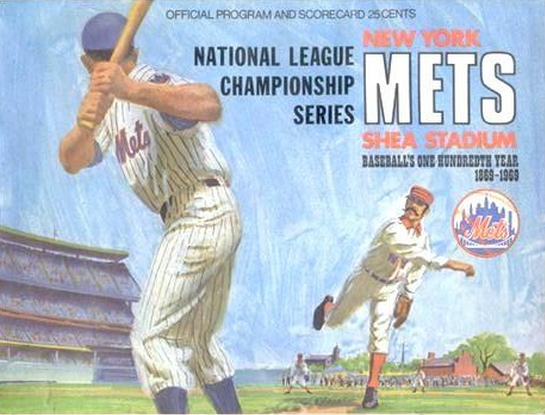
The Mets drew first blood in Game 1 (October 4), with Shamsky singling off Niekro to lead off the second, coming home on Grote’s single three batters later. Boswell (walk) came around to score on a passed ball during Bud Harrelson‘s — another key cog — at-bat, giving the Mets a 2-0 lead.
Atlanta got one back off Seaver in the bottom half of the inning on Boyer’s sacrifice fly to score Carty, who led off the frame with a double, then took the lead on three consecutive doubles from Millan, Gonzalez, and Aaron, to go ahead 3-2, but the Mets kept coming back — as did the Braves.
Harrelson’s two-run triple in the fourth put the Mets back in front, 4-3. Gonzalez’ solo shot off Seaver in the fifth tied it at four and Aaron’s home run in the seventh extended that lead to 5-3, but the Mets put up five in the eighth off Niekro (Wayne Garrett started the inning with a double, and the boys took it from there), and Ron Taylor worked cleanly through two innings in relief, closing out a 9-5 Mets win.
The Mets’ offense remained alive and well in Game 2, posting an 11-spot on Reed and a host of Braves bullpen arms. Agee (2-for-4, two RBIs), Jones (3-for-5, three RBIs), and Boswell all homered, and Shamsky went 3-for-5 to lead the charge. Though, things did get a bit hazy for a minute or two.
With the Mets ahead 9-1 in the fifth, Atlanta scored five on Koosman to chase the southpaw, but the Mets tacked on two more in the top of the seventh and rode 4.1 scoreless innings from Taylor and McGraw to head back to Flushing with a commanding 2-0 series lead.
Atlanta got out to a quick 2-0 lead in Game 3 at Shea Stadium on Hank Aaron‘s first-inning, two-run homer off Gentry. The Mets answered back with a run in the third on Agee’s solo shot and two more in the fourth on Boswell’s two-run homer off Pat Jarvis to take the lead, but Orlando Cepeda took Ryan deep in the fifth for a two-run homer, putting the Braves back ahead 4-3.
In what was becoming a trend for the Mets this postseason, a big inning — which always seemed to be waiting around the corner for this team — transpired and they never looked back. Nolan Ryan led off the fifth with a single and Garrett put the Mets ahead 5-4 with another Mets two-run jack.
Jones followed him with a double and Boswell added his third RBI of the day with a base hit into right field, giving New York a 6-4 lead. In the sixth, Agee’s RBI single to score Grote added a little breathing room, and Ryan worked around a troubling eighth to secure the Mets’ first National League pennant.
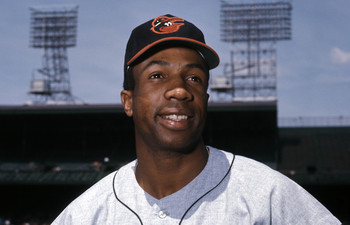
Next up, the mighty Baltimore Orioles. Winners of 109 games during the 1969 regular season, the O’s were absolutely stacked from top to bottom with star-level players.
Between Frank Robinson (.308/.415/.540, 32 HR, 100 RBIs), Boog Powell (.304/.383/.559, 37 HR, 121 RBIs), Paul Blair (.285/.327/.477, 26 HR, 76 RBIs), Don Buford (.291/.397/.417), Mark Belanger (.287/.351/.345), and Davey Johnson (.280/.351/.391), the offense was a force to be reckoned with — and had the numbers to prove it (4.81 runs per game and 175 home runs were good for third in MLB; 806 strikeouts were second-least).
Left-handers Mike Cuellar (23-11, 2.38 ERA) and Dave McNally (20-7, 3.22 ERA), as well as young-righthander Jim Palmer (16-4, 2.34 ERA), provided the Orioles with a level of starting pitching that was right on par with the Mets’. Eddie Watt (1.65 ERA, 56 games), Dave Leonhard (2.49 ERA, 37 games), Dick Hall (1.92 ERA, 39 games), and Pete Richert (2.20 ERA, 44 games) were a more-than-effective bunch, as well, filling out Baltimore’s bullpen.
The Orioles swept the Minnesota Twins in the ALCS, setting up what, on paper, appeared to be an extremely one-sided affair. The upstart Mets couldn’t possibly stand their ground against, arguably, the best team assembled in the era, could they? We were soon to find out.
Baltimore took Game 1 (October 11, at Memorial Stadium in Maryland) by the score of 4-1, with the O’s getting to Seaver early Buford’s first-inning solo homer and tacked on three more in the fourth via a five-base hit fourth, headlined by RBI singles from Belanger and Cuellar, and a run-scoring double from Buford.
The Mets scored one run off Cuellar (CG, eight strikeouts, four walks) in the seventh (Al Weis sacrifice fly, scoring Clendenon; leadoff single), but Baltimore held New York off to take a 1-0 series lead.
Jerry Koosman answered the bell for the Metsies in the second game of the series, allowing just two hits over 8.2 innings (four strikeouts, three walks), before handing it off to Ron Taylor for the one-out save.
The Mets managed six hits off Baltimore starter, McNally, with Donn Clendenon‘s fourth-inning solo homer into deep right field staking New York to a 1-0 lead.
Brooks Robinson singled in the seventh to score Blair after the former Met singled to lead off the frame and stole second with two outs to tie the game at one, but Al Weis — one of the more underappreciated role players on the ’69 team — singled to score Ed Charles (two-out double), to put the Mets ahead for good.
Koosman issued two walks in the bottom of the ninth, but worked around the traffic, securing their first-ever World Series victory. With the series tied at one and heading back to New York, the Mets had an opportunity to make some real waves. The entire region was infected with Mets Fever, already. Three more wins and a pandemic would break out.
The Mets got their catalytic moment in Game 3, with Gary Gentry and Nolan Ryan shutting out the O’s on just four hits and the offense chasing Palmer after just six innings (four runs on five hits and four walks).
Agee’s third home run of the series in the first turned out to be the game-winner, Gentry added a two-RBI single in the second, Grote’s RBI double in the sixth made it a 4-0 game, and Eddie Kranepool’s solo shot in the eighth capped off a magical afternoon at Big Shea.
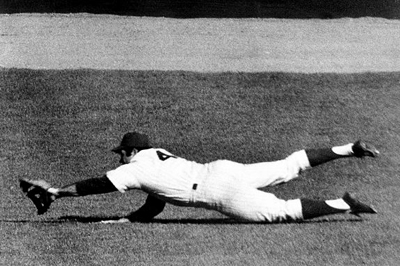
With the opportunity to take a 3-1 series lead, the Mets trotted out their undisputed ace, right-hander Tom Seaver to get the job done. He did so, and then some. Clendenon’s second home run of the World Series put the Mets ahead 1-0 in the second, and Seaver put the Mets on his back, working around two hits and a walk over the next seven innings to keep New York ahead.
In the top of the ninth, Orioles third baseman, Brooks Robinson lined a sharp, rapidly-falling line drive into right field with men on the corners and one out (Robinson and Powell stroked back-t0-back singles versus Seaver ahead of him).
Right-field platoon member, Ron Swoboda, proceeded to make a catch that will forever live in the hearts and minds of not only his teammates but the denizens of Mets fans who were privileged enough to be alive for this magical moment in time — and, of course, those who were only lucky enough to relive it after the fact.
Swoboda’s jump on the ball is the most underrated part of his legendary catch, but him stretching his left arm across his body, heaving himself across the thin outfield grass will be etched in the memories of Mets fans forever.
Frank Robinson scored from third on the sacrifice to tie it up, but Swoboda’s grab galvanized the Mets, and, after Seaver worked around trouble yet again in the tenth (Johnson reached on an error, Clay Dalrymple singled), retiring Buford and Blair (huge strikeout) to send it to the bottom of the tenth.
Jerry Grote led off the frame with a bloop double into shallow left. Mets skipper Gil Hodges sent in Rod Gaspar as a pinch-runner and, after the O’s intentionally walked Weis, J.C. Martin laid down a sacrifice bunt that Baltimore reliever Pete Richert threw away, scoring Gaspar and moving the Mets one more win from realizing the impossible dream.
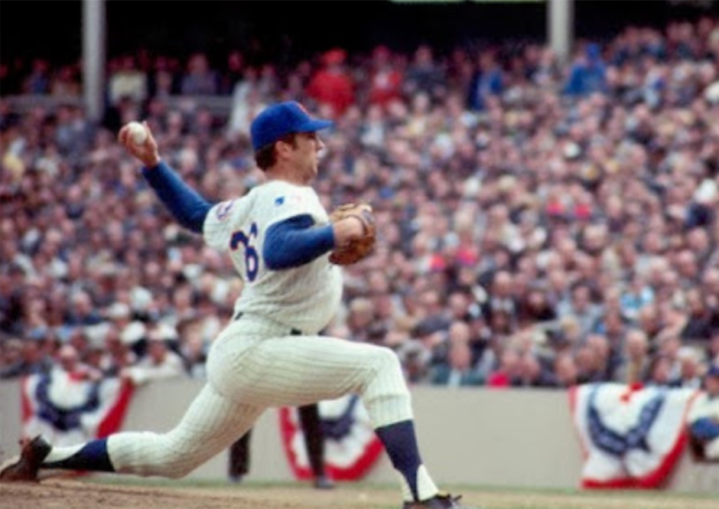
With Koosman on the mound once again, the Mets and their fans could feel a championship at their fingertips. After an uninspiring showing versus the Braves in the NLCS, the left-hander shone during his first start versus Baltimore in Game 2 (8.2 IP, one run, two hits).
That momentum clearly carried over into this start, as Koosman shook off a three-run third inning (two-run homer via McNally; solo shot from Frank Robinson) to retire the next nine batters he faced, keeping the Mets close.
A lifeless first half the game at the plate for the Mets turned around in the sixth. Cleon Jones was nearly struck by a McNally pitch to start the frame, and — after some prodding from Hodges – – the umpires discovered shoe polish on the ball, awarding Jones first base.
Right on cue, Donn Clendenon sent a pitch into deep left field in the next at-bat to cut Baltimore’s lead to 3-2.
After a solo homer via Weis to lead off the seventh, tying the game, Jones — once again — got things started with a leadoff double in the bottom of the eighth off Baltimore reliever, Eddie Watt.
Swoboda contributed a one-out double of his own to score Jones, putting the Mets ahead 4-3, then, with two outs, Grote’s groundball got past Powell at first base, allowing Swoboda to score and extending the lead to 5-3.
Though, with Frank Robinson, Boog Powell, and Brooks Robinson due up in the top of the ninth, nothing was set in stone just yet. Koosman issued a leadoff walk to Robinson but got Powell to groundout to Weis for the forceout at second.
Brooks Robinson flew out to Swoboda in right — this time a much less difficult grab — and, with pinch-runner Chico Salmon still at first base, future Mets manager, and 1986 World Series-winning skipper, Davey Johnson stepped to the plate as the tying run.
Koos got Johnson to fly out to Cleon Jones in left field — as iconic a moment there is for this organization — and history was made. The Mets, only eight years old at the time, had just knocked off the thought-to-be-insurmountable Baltimore Orioles in convincing fashion.
Donn Clendenon (.357/.438/1.071, three homers, four RBIs, six strikeouts over 16 plate appearances) was named the World Series MVP, and the celebration was on.
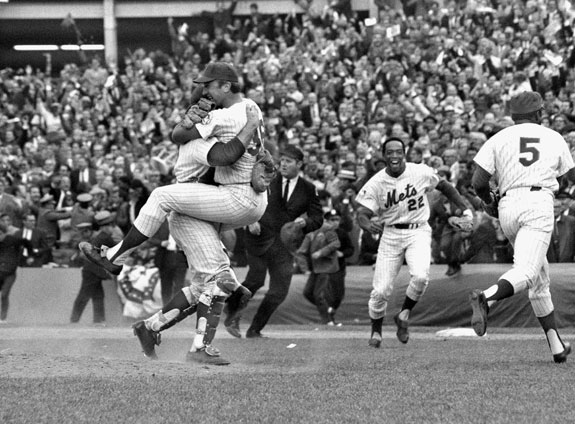
The timeless images of players leaping into each other’s arms, the fans rejoicing on, in, and around Shea Stadium, the smiles and champagne flowing as freely as each other throughout the Mets’ clubhouse, and that still-legendary ticker-tape parade down Manhattan’s Canyon of Heroes are sewn into the fabric of this franchise, as well as this city.
As dark, twisted, and, at times, comical, things have got for this franchise over the course of their 58-year history, the Miracle of 1969 will live on forever as proof that with the right frame of mind, leadership, personnel, and a little bit of magic, anything is possible — even miracles.


